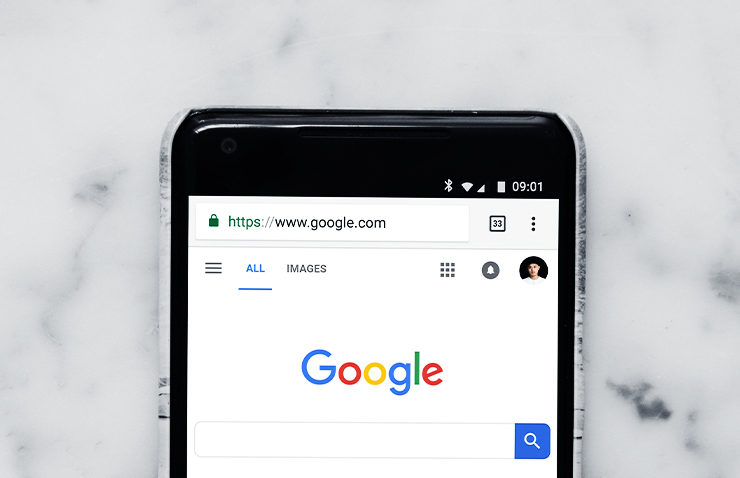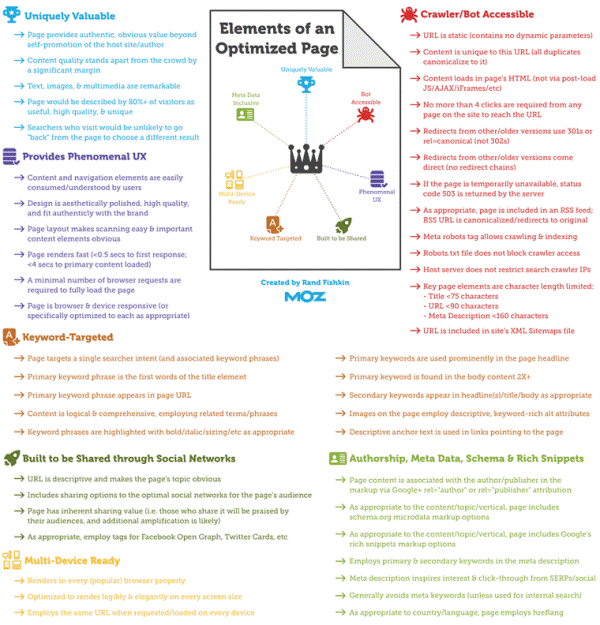Anyone who has dabbled in Search Engine Optimization (SEO) knows it can be complicated. Explaining it to those with little to no experience with it can be daunting. However, as agencies, it’s our job to create and implement successful marketing campaigns and keep clients informed and up-to-date on best practices and industry changes – including those related to SEO.
If you’re struggling to explain how SEO works to your clients, here are some simple tips to help you – and your clients – out.
9 Simple Tips to Explain SEO to Your Clients
To bridge the communication gap, we’ve compiled nine simple tips to help you explain SEO to clients in a way that resonates with them.
1. Set Expectations Early
Everyone wants a quick fix. Often, clients believe that as soon as you begin work on their website, they will start to rank #1 for 1000 industry keywords and terms, and the phone is going to start ringing off the hook – and around the clock. And while we would all love for that to be a reality, it just isn’t.
The truth of the matter is it takes time. Yes, it’s the last thing anyone wants to hear. “You need to be patient. These things take time.” But it’s the truth. Now, it’s not to say you can’t discuss the plan and the goals you’re trying to achieve. You most certainly should. But while you’re reviewing, be sure to address the fact that this isn’t a quick fix. Yes, you will begin to see changes to your website’s health and traffic but to really see the changes can take months. And if the client is seriously bad off, it could take more.
Prepare to give them weekly updates and monthly reports to discuss the changes. Highlight what’s working – all improvements – and address items that aren’t showing gains; if you can explain why, let them know. If you don’t know why, be transparent. Let them know you’re reviewing and will provide insight on changes to the plan to rectify the issue. Clear communication on what to expect and when is crucial.
2. Communicate Results – Often
Far too often, we’ve worked with companies whose biggest complaint was, “The other marketing team just never let us know what was going on with our SEO.” They were disheartened by the lack of reporting and explanation of what was being done and what the results were. In fact, they felt as though they were taken advantage of and lost trust in their marketing company. Don’t be that agency that fails to explain SEO to clients.
Your clients want to know that the money they’re investing is generating results. If you fail to touch base with them regularly and provide adequate reporting with easy-to-understand explanations, be prepared to lose their business.
Work with your team and your client to schedule regular check-ins and reporting schedules. Be prepared to provide them with metrics, such as search traffic, keyword rankings, site health, and more. And while providing a ton of information is important, be sure it’s clear, concise, and presented in a way that isn’t going to overwhelm them. Do not send over a 10-page Word Doc of an SEO synopsis and walk away. Doing that is going to piss off your clients and send them packing.
3. Assess their Level of SEO Knowledge
Understanding whether your client is an SEO novice or a Guru will help you better determine what level of communication and reporting you should be providing. Do you need to start from the beginning, explaining what SEO is and what it can do for their business? Or have they actively worked on it in the past and are well-versed?
Make sure your client is aware that SEO stands for Search Engine Optimization. It may seem silly, but it’s small things like that which can make a world of difference. When we’re immersed in it all day – every day – we can easily take the simple things for granted. Don’t expect them to know what you know.
Once you’ve got a firm grasp on their level of SEO knowledge, you can begin framing your communications and reporting in a way that not only clearly articulates your work but also creates better efficiencies for your team.
At Oyova, when we begin discussing SEO work with our clients, we have a list of questions we ask to assess their needs and overall knowledge on the subject. From there, we clearly define what KPIs are needed and to whom we’re reporting them. Doing so allows us to know how to frame the correspondence and when.
4. Let them Know Google Runs the Show
If you’ve worked in SEO, then you can attest to the fact that, despite your best efforts, Google decides whether or not your website succeeds or not. They’re constantly releasing new updates that impact website rankings and traffic, making an SEO marketer’s world a nightmare. The best approach there is transparency. When a release takes place, send them an email letting them know, even if their site was not directly impacted.
Now, if you are following SEO industry best practices, your client’s website won’t experience Google’s wrath as much as those who do not.
5. Provide a Brief Explanation of Industry Best Practices
As a marketer, you serve as a type of teacher for your clients. You’re the expert. The one who can explain SEO to them, how things work, and why. When explaining SEO to your clients, provide a brief overview of SEO best practices. Let them know what search engines are looking for and how you will provide it.
For example, if you’re discussing content marketing and blogging, consider the discussion of the importance of On-Page SEO. Why it’s important to have page titles, meta descriptions, alt text, etc., and why providing key terms within your content is important. At Oyova, we work with clients who, at times, choose to write blogs for the website. To assist them with their SEO, we provide a checklist of key items they should focus on when creating content to help guide them. It also allows them to be hands-on in SEO and become more knowledgeable about the process.
Tip: We always recommend providing quick write-ups, checklists, or PDFs as quick references for your clients. It’s something they can refer back to should they have a question and can minimize the time you need to review certain items. You can even share a blog post you have on your website that can help them out. Use your resources!
6. Keep them Informed
SEO is an ever-evolving field. It’s one of the many aspects that can make it challenging to explain SEO to clients. When changes happen, be sure to make your client aware. It doesn’t have to be right away – unless it will directly impact their site soon. It could be a list of items you round up for your next sit-down or phone call. Or, maybe you just wrote a new blog and thought they’d benefit from reading it. Send them a link and let them know you were thinking of them and thought they should check it out.
And while you’re keeping them “in the know,” you are doing your due diligence to stay on your SEO A-game. It’s a win-win for everyone.
7. Provide Real-World Examples:
Let’s be real. Most people learn by seeing, not just hearing or reading. Do you remember storytime as a kid? How much more exciting was it when the book had pictures? It’s the same concept. Showing real-world SEO examples, like case studies, makes understanding SEO more accessible and less abstract.
At Oyova, we often share SEO case studies that outline a client who had similar pain points and how our SEO strategy made a significant impact on their website traffic and leads. You could even do a side-by-side comparison of their website’s health before and after the SEO fairy dust was sprinkled.
8. Walk Through the SEO Process:
You know how cooking shows break down each step of making a gourmet dish, and suddenly, it seems doable? That’s what we’re aiming for here. Lay it out: keyword research, on-page optimization, backlinks, and all. Break it down Barney-style if you have to.
By walking clients through the process, you demystify SEO. At our agency, we use simplified flow charts or even infographics to visually represent the journey from an SEO newbie to a website that’s humming like a well-tuned engine. Yes, there are complexities, but presenting a simplified version makes it digestible.
9. Discuss ROI and Metrics:
Look, at the end of the day, your clients want to know that their investment isn’t going into a black hole. So, talk about money and metrics. Most clients speak the language of ROI. How much bang are they getting for their buck? They don’t need to be SEO experts to understand that an increase in website traffic and conversions is a good thing.
Get ready to give them an education in terms they understand – dollars and cents. Show them how SEO impacts ROI through enhanced visibility, more traffic, and, ultimately, more revenue. You could even put it into a spreadsheet or, better yet, an interactive dashboard. Everyone loves a good dashboard.
Breaking Down SEO Jargon: Speak Their Language
It’s one thing for us to swim comfortably in a sea of “SERPs,” “backlinks,” and “meta descriptions,” but remember: Your client might be hearing these terms for the first time. Here’s how you might explain some popular SEO terms to clients.
- Backlinks:
- What You Say: “These are links from other websites pointing to your site.”
- Client-Friendly Explanation: “Think of backlinks as votes of confidence from other websites. The more you have from reputable sources, the more credible your ‘online reputation.'”
- Meta Description:
- What You Say: “It’s a brief summary of a webpage that shows up in search results.”
- Client-Friendly Explanation: “It’s like the blurb on the back of a book. It gives people a quick idea of what they’ll find if they decide to ‘open the book,’ or in this case, click on the link.”
- Crawlability:
- What You Say: “This refers to a search engine’s ability to navigate through your website and index it.”
- Client-Friendly Explanation: “Imagine your website is a building. Crawlability is like making sure all the doors and hallways are accessible so a building inspector (or, in this case, Google) can easily check every room.”
- Domain Authority:
- What You Say: “It’s a metric that predicts how well your website will rank on search engines.”
- Client-Friendly Explanation: “Think of this as your business’s credit score but for the internet. The higher the score, the more trustworthy your site appears to Google.”
- Alt Text:
- What You Say: “It’s text added to images on your site that can be read by search engines.”
- Client-Friendly Explanation: “Alt text is like Braille for search engines. It helps them ‘see’ images by reading the text description you provide.”
When you simplify and clearly explain SEO to clients, you’re assuring them that they’re in competent hands.
Let’s not forget clarity is the name of the game. The more your clients get the ins and outs of what’s happening, the less likely they are to second-guess your expertise or get frustrated with the unfolding events. This clarity encourages more engaged and insightful dialogues about their SEO strategy. So, it’s a win-win situation for all parties involved.
How To Explain SEO in One Paragraph: Beginner vs. Intermediate
As SEO professionals, we often find ourselves tasked with the challenge of explaining SEO to clients. But not all clients are at the same starting point; some need the basics, while others require a bit more depth. That’s why we’ve crafted two concise explanations that you can use to get your clients up to speed, regardless of their prior knowledge. 
For your clients who are completely new to SEO, this simplified explanation should do the trick. It breaks down the essence of what SEO does for a website without overwhelming them with jargon.
“At Oyova, we see SEO as a blend of science and strategy aimed at increasing your website’s visibility on search engines like Google. We optimize your site so that it not only ranks higher but also attracts the right audience. This involves tweaking various elements—from the words on your pages to how other sites link to you on the web. It’s not just about getting to the top; it’s about staying there and converting clicks into customers. Ready to break down how this all works? Let’s dive in.”
Now, if your client has some basic understanding of SEO but needs a clearer picture of the various elements involved, this next paragraph offers a more detailed overview. It incorporates a little more technical nuance without getting too complicated.
“At Oyova, we understand that SEO, or Search Engine Optimization, may sound like rocket science to many. But in reality, it’s a focused approach to help your website get found by people who are searching for what you offer. Think of it as a two-way match-making process. We work to make sure Google knows what’s on your web pages through a mix of technical tweaks and content strategies, allowing your site to be a top match for the right search queries. We’re not just looking at keywords here; we’re considering user experience, site speed, mobile-friendliness, and a host of other factors that influence how Google perceives your site’s relevance and quality. But our work doesn’t stop at getting you to the coveted first page; we continue to monitor, analyze, and adjust strategies to keep you there and, more importantly, to help turn that visibility into real, tangible customer engagements. Intrigued about how this translates into your business? Let’s break it down further.”
So, there you have it: two versatile explanations designed to make your life easier when you’re discussing SEO with your clients. Remember, the goal is to inform, not to overwhelm. Choose the explanation that best suits your client’s familiarity with SEO, and you’ll be well on your way to setting a strong foundation for a successful campaign.
Your Next Steps – Consider Outsourcing SEO
If you’re struggling to explain SEO to clients, don’t worry. You’re not alone. The good news is it’s a simple problem to remedy. It just takes a little time to know your clients better and provide them with the tools that best fit their learning styles and needs.
Some clients are visual, while others are more hands-on. Devise an SEO plan that can both provide results and keep them engaged. Make it a point to communicate with them regularly and set expectations. Also, don’t be afraid to ask questions to assess their level of SEO knowledge. Stay up-to-date on industry news, best practices, and all of the thousand Google algorithm releases, and keep your clients in the know often. Provide them with simple write-ups, checklists, and PDFs to reference if it’s something that will help them. Soon enough, they’ll get on track with SEO, and you will have created a lasting partnership.
And if that doesn’t work out, maybe outsource your SEO and contact a digital agency that’s done this kind of thing before – like Oyova. (Hint hint. Wink Wink.) We’ve worked with other agencies to streamline their SEO services and provide long-lasting, positive results for their clients.
Interested? Give our team a call. They like to talk – and they like providing simple solutions to make you – and your clients – successful.

